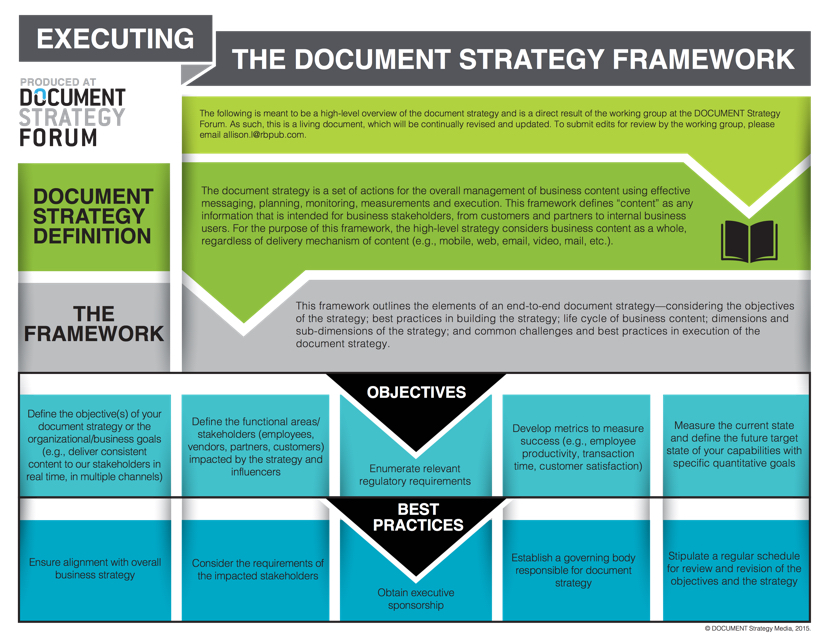
Image by: ismagilov, ©2015 Getty Images
This is the very reason we collected a group of business leaders at the DOCUMENT Strategy Forum back in May as part of a peer working group to tackle the document strategy. As a result of their work, along with concentrated vetting by our 2016 DOCUMENT Strategy Forum Advisory Board, we are proud to present our official framework for executing the document strategy, the very first of its kind and 100% produced by a group of your peers. I’m a very strong believer in the power of shared experiences by like-minded business professionals to advance the maturity of our organizational strategies. We believe that this framework is only the beginning in harnessing and executing on such strategies.
Our framework is a high-level overview of the document strategy and considers the objectives of the strategy, best practices in building the strategy, life cycle of business content, dimensions and sub-dimensions of the strategy and common challenges and best practices in the execution of the document strategy. In it, we define the document strategy as:
“A set of actions for the overall management of business content using effective messaging, planning, monitoring, measurements and execution. This framework defines “content” as any information that is intended for business stakeholders, from customers and partners to internal business users. For the purpose of this framework, the high-level strategy considers business content as a whole, regardless of delivery mechanism of content (e.g., mobile, web, email, video, mail, etc.).”

Define your vision and strategy
The above framework outlines the key objectives when building the strategy and best practices for achieving said objectives. This framework approaches the building blocks of an enterprise-wide strategy from a very high level, and as such, we believe it’s highly applicable to many other strategies within the organization. However, with any strategic transformation, defining your organization’s vision of the strategy is vital to your planning phase. Tailoring and modifying the definition of your strategy, terms used in execution and the scope of all impacted areas must be done in accordance with individual organizational goals and structure. As these are highly variable from organization to organization, this framework does not apply such parameters and only defines its application to business content as a whole. Therefore, modifications will need to be applied to the framework dependent on these components. Nevertheless, you must articulate the organization’s overarching goal, how the strategy supports this mission, your current state and how you will reach the desired end state.
Continue reading: Page 1 | Page 2 |





















